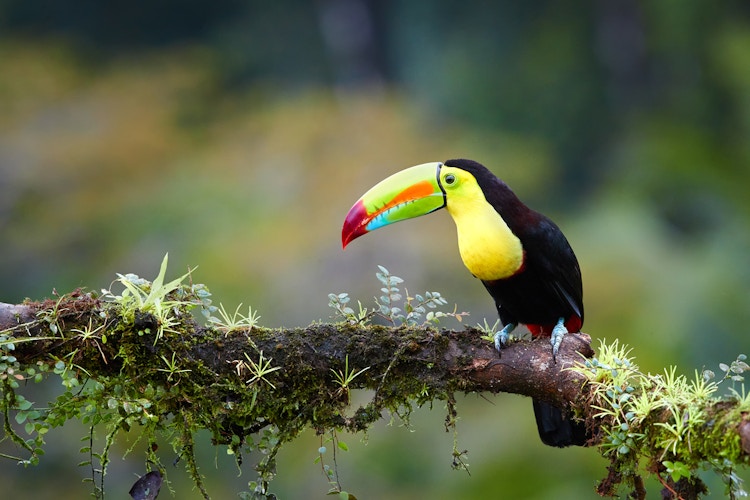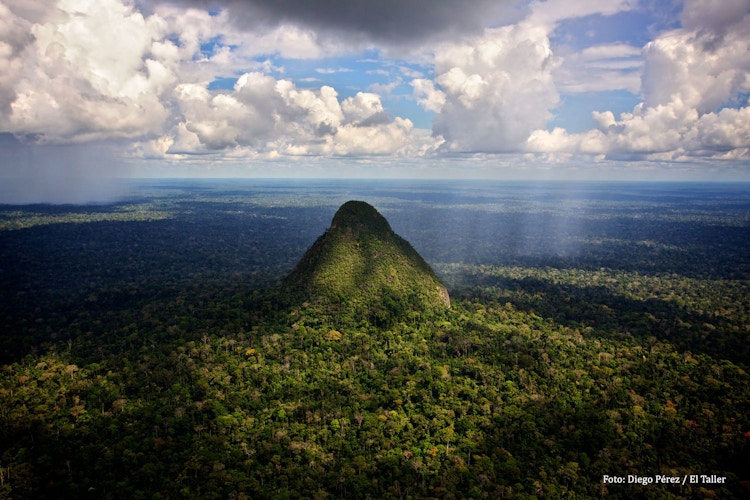
Good news for the rainforest in 2023
A decrease in deforestation, the first female Brazilian indigenous minister and NOK 1 billion in additional rainforest support.
HEART: A heart-shaped lake in the Brazilian Amazon. Photo: Shutterstock
2023 has seen positive results and good news for the rainforest.
There has been a very welcome decline in deforestation in several parts of the world. Governments in several major rainforest countries are signalling that they are taking rainforest conservation seriously.
“Political will is crucial. You can't force a country to take care of its forests. You have to create a kind of consensus, and if there is strong will from the top, you can achieve an incredible amount in a short time," says Lars Løvold, special advisor at Rainforest Foundation Norway.
The work at ground level is just as important. Experience shows that where indigenous peoples and local communities are given rights to their rainforests, the forests remain intact.
Working closely with indigenous peoples and local communities in rainforest countries, creating sustainable sources of income for forest peoples, and supporting them in the fight against deforestation is our basic recipe for a green and sustainable future for the rainforest.
Good news and results in 2023
With these encouraging results, we enter the new year with vigour and hope for the future. We will continue the fight for the rainforest, the people who live there, biodiversity and the climate!

MINISTERS: Norway's Minister of Climate and Environment, Andreas Bjelland Eriksen, Brazil's Minister of Climate and Environment, Marina Silva and the UK's Minister for Energy Security and Net Zero, Graham Stuart at the COP28 climate conference. Photo: Julie Wentzel Frøland/RFN
Norway
Norway's International Climate and Forest Initiative will receive NOK 1 billion in additional funding in 2024. This means that Norway will give a total of NOK 4 billion to rainforest conservation as a climate measure in 2024.
A welcome Christmas present at the end of the year!

MINISTER: Sônia Guajajara, Brazils Minister of Indigenous Peoples. Photo: Midia Ninja.
Brazil
Deforestation in the Brazilian Amazon fell to its lowest level in five years. The new Brazilian government is taking rainforests and Indigenous peoples seriously, creating new opportunities for our partners in Brazil.
Sônia Guajajara became Brazil's first ever Minister of Indigenous Affairs. She is an indigenous activist, environmentalist - and now also the first indigenous woman to hold a ministerial post in Brazil. This is great and historic news for indigenous peoples and the rainforest!

TOUCAN: A keel-billed toucan (Ramphastos sulfuratus) sits on a branch. They can be found in the Colombian Amazon, but also in rainforests from southern Mexico to Ecuador. Photo: Martin Mecnarowski
Colombia
Colombia's new government under President Gustavo Petro has pledged to preserve the rainforest, and deforestation in the Colombian Amazon fell by 70 per cent in the first nine months of the year.
"This is just the beginning. I believe that Colombia can stop deforestation in the Amazon and turn it all around," Colombian Environment Minister Susana Muhamad told The Guardian.

BIG: The approved protected area for isolated indigenous peoples in the Sierra Del Divisor Occidental in Peru is roughly the size of Puerto Rico. Photo: Diego Perez/El Taller
Peru
In Peru, 5000 km2 of rainforest has been approved as the “Sierra del Divisor Occidental” protected area for indigenous peoples in voluntary isolation.
Indigenous peoples without contact with the outside world will be protected so that they can live in peace. The protected area is roughly the same size as the island of Puerto Rico.
Rainforest Foundation Norway has been working on the issue for many years. A great victory for Indigenous peoples!

FROGS: Three vigilant Borneo eared frogs (Polypedates otilophus) in the rainforest on the island of Borneo, Indonesia. Photo: Shutterstock
Indonesia
Indonesia receives NOK 1 billion from Norway for its successful efforts to reduce deforestation. The money goes to Indonesia's environmental fund, which uses the money for environmental initiatives and forest-dependent local communities.
The country has the third largest continuous rainforest in the world and has set itself the goal of moving from being an emitter to becoming an important "carbon vacuum cleaner".

BIRD OF PARADISE: A bird of paradise in the rainforest in Papua New-Guinea. Photo: Shutterstock
Papua New Guinea
In Papua New Guinea, we are in the process of creating a legal fund to fight deforestation in the courts.
This will enable indigenous and local communities to challenge and cancel illegally issued logging licenses.

FISHERMAN: A fisherman in the rainforest in DR. Congo. Photo: Johan Wildhagen
The Democratic Republic of the Congo
In DR. Congo, we have begun the journey towards realising what we call the Intact Forest Facility. This is a unique financing mechanism that will be managed by indigenous peoples and local communities in collaboration with RFN.
This way we will ensure that climate and forest funds go directly to the rainforest guardians on the ground instead of through international intermediaries.

UNTOUCHED: Untouched rainforest in the Amazon. Photo: Shutterstock
South America
The Cargill Corporation, one of the world's largest traders in agricultural commodities, has now committed to eliminating deforestation and conversion of all natural ecosystems across most commodity crops (soy, wheat, corn and cotton) in Brazil, Argentina and Uruguay by 2025.
If they follow through on this, it promises to be a major step towards cleaning up soy supply chains.

Why saving the rainforest so important?
If we are to solve the climate crisis, we must save the rainforest. Saving the rainforest is one of the best and cheapest climate measures we have, because the rainforest captures and stores at least 1,000 million tonnes of CO2, equivalent to Norway's total emissions for 24,000 years. When the rainforest is destroyed, the C02 is released and accelerates climate change
The rainforest is also a huge biological treasure trove - up to 80 per cent of all animal and plant species on land live here - on 6 per cent of the Earth's surface. Maintaining this unique ecosystem is crucial; not just because a lost species is a species lost forever, but because the rainforest performs services that are vital to us and other life on Earth. It regulates rainfall and weather, and it harbours untold medical and technological potential.
The rainforest is home to millions of forest people with unique cultures, knowledge and traditions. They rely on the rainforest for their livelihoods.

The area of rainforest that we and our partners help protect is roughly the size of Norway and Sweden combined.
This means that every year we prevent CO2 emissions equivalent to 1.5 times Norway's total annual emissions.